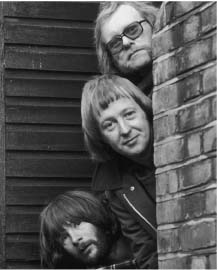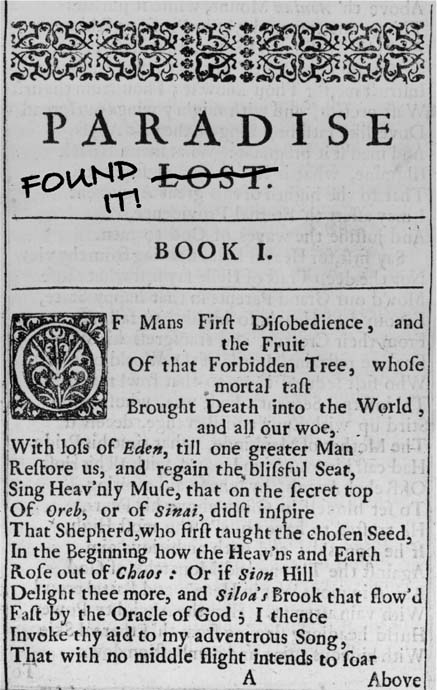Lyttelton's Britain (14 page)
Read Lyttelton's Britain Online
Authors: Iain Pattinson
Reading residents of today include Uri Geller, who is something of a local campaigner. There’s always something he’s ringing the council to bend their ear about.
Clive Sinclair, who invented the C5, was born in Reading. Commercial success evaded his novel electric scooter as its range was limited to no more than a few hundred yards, or slightly more if you bought the optional extension lead.
Reading is proud to be the home of the Yellow Pages and what a boon they are. If you want to unblock a toilet, they’ll readily find you a bulldozer to drive through the middle of Slough.

O
XFORD
is a fine historic city with much to offer. The name ‘Oxford’ came about when an observant local noticed an ox in a ford and thought it would make a nice name for a university city. It is a sobering thought that had the animal in question been a cat, our greatest seat of learning would have been situated in a suburb of Lewisham.
No introduction to Oxford would be complete without a mention of its world-famous university. So that’s that done.
The first evidence of human settlement in Oxford dates from around 2000
BC
with discoveries of crude arrow and spear heads. Later, a more sophisticated tribe of metal workers settled at the confluence of the Cherwell and Thames to forge their Bronze Age jewellery, which they sell on eBay.
Oxfordshire was once famous for raising fine pigs, but local bacon production began to suffer with competition from Danish imports. However, the trend reversed when it was discovered just how much water Danish bacon contained, after an Abingdon man drowned on his breakfast.
During Tudor times, the Protestant Bishops Latimer and Ridley were burnt alive in Oxford in 1555, followed by Archbishop Cranmer the following summer. After an investigation, it was discovered the General Synod Events Committee had bought a faulty barbeque.
During the Civil War, Oxford was a Royalist stronghold and it was from the city that Prince Rupert’s cavalry rode north to fight Cromwell’s forces at the Battle of Birmingham. The Roundheads lost and so were forced to keep it.
With the restoration of the monarchy, Oxford found favour with King Charles II, who was a frequent visitor, staying at the Old Red Lion on Merton Street where Nell Gwynn kept a room. Now Grade I listed, her bedroom has been preserved, complete with its original revolving door.
In the early 1700s, Edmund Halley came to Oxford, where he calculated that a huge comet would appear in 1987. And, sure enough, in August that year, exactly as predicted, one opened next to B&Q.
Another who worked in Oxford was Sir William Blackstone, the 18th Century jurist noted as the founding father of the United States legal system. To this day defendants can claim the Blackstone Defence, as employed by O. J. Simpson’s lawyers, a device which insists every man is innocent even if he is obviously guilty as hell.
The Reverend Dr Spooner lived and lectured in Oxford. As a boating enthusiast he spent many hours renovating and maintaining local water craft. And what a reaction there was from the Women’s Institute when Dr Spooner presented his lecture ‘Care of Punts’, ably assisted by his secretary, Mary Hinge.
William Morris, later Lord Nuffield, established car manufacture in Oxford in 1913. His first model was the famous ‘Bull-Nose’ Morris, so called because his name was ‘Morris’ and he wore a large brass ring through his nose. The Morris Organisation laid the foundations of what later became Austin-Morris, then BMC, then British Leyland, then Jaguar-Leyland, then Jaguar-Rover, then MG-Rover, and finally the Tsing How Kak Shanghai Trading Corporation (in receivership) Ltd. Sadly now gone, the company once provided steady employment for generations of Oxford signwriters.

British Leyland unveil their new model range for 1982
There’s always much excitement in Oxford when the university rowing crew defeat Cambridge in the annual Boat Race. In fact it’s traditional for the eight victorious oarsmen to have their hands shaken by the mayor, while the mayor’s wife bends down to kiss their little cox.
It is a tradition of Oxford colleges that they provide public baths fed by natural cool water springs for the use of weary travellers. On a hot summer’s day there is nothing to beat
popping into the college baths, stripping off and immediately feeling a little fresher.
Tim Henman was born nearby and as a young lad developed his tennis skills by playing alone against the side of his parents’ house. One recalls his first tournament when he got all the way through to the semi-finals, only to be beaten in straight sets by a garage door.
Nearby is Blenheim Palace, seat of the Marlborough dynasty. The name derives from a decisive battle of 1704, when the first Duke of Marlborough won a great victory over Louis XIV, thus saving Europe from French domination. Blenheim Palace recently began generating its own electricity, from a dynamo connected to Marlborough’s tomb.

H
IGH WYCOMBE
is a town boasting a rich and varied past. The very name ‘High Wycombe’ has an interesting derivation. The Saxon word ‘Wick’ meant a small village community, ‘Coomb’ was the Celtic word for a small depression or hollow, while the Middle English ‘High’ has the same meaning as today. Hence the literal translation: ‘Hello villagers who live in a hole’.
The town’s wealth was built on the manufacture of traditional furnishings, and High Wycombe quickly became known as the ‘Furniture capital of England’. Then, with the growth in demand for chests of drawers and fancy foot-stools, it was elevated to the tall-boy and pouffe capital of Europe.
The area first attracted pilgrims in the Dark Ages, when the sick came to take the waters at the local ‘Holy Wells’, which they believed could cure their blindness. This practice had to stop when, despite the warning signs, the deep wells became blocked by the many who had fallen down them.
Much of the local land formed the estate of the first Duke of Buckingham, fellow reveller and confidante of the high-living Charles II. Remnants of an old nursery rhyme mocking his antics were recently discovered in the town archive. It’s difficult to make out the full wording, but it starts: ‘There is an old Duke
called Buckingham, whose maids say he never stops …’. Sadly, that’s all that survives.
Close by is Wycombe Air Park. This houses a fine collection of vintage aircraft, including the Vickers Boxkite Biplane which local man Bert Hinkler flew in 1921. Racing the express train from London, he won by a full eleven minutes. At the age of 103, Mr Hinkler celebrated by repeating the event in October 2006, and beat the train by seven and half hours. It would have been more, but the chain kept falling off his bike.
The nearby Chiltern Hills are famous for the health-giving properties of their fine spring waters, but when bottles were recently discovered to contain urine, they were quickly withdrawn from supermarket shelves and moved round to the own-brand lager section.
The area is also home to many celebrities including Sporty Spice, Noel Gallagher and Kate Moss, and according to the official guide, Tim Brooke-Taylor lives within spitting distance. A facility many locals are happy to use fully.

Britain’s favourite pop combo, The Goodies, whose 1976 single ‘Do the Funky Jingle Bells’ became that year’s Christmas number 37

I
T WAS IN THE
11th Century that the Catalonian King Wilfred came upon a site by a water crossing where he laid down the foundations of a new city, which was to become the envy of the Holy Roman Empire. With its ancient covered market, Romanesque brick towers inlaid with fine enamelled tiles, a Baroque cathedral and a former Summer Palace housing the finest collection of Renaissance artworks in Northern Europe, there are few things finer than to spend an afternoon browsing amidst its remarkable Gothic splendour; a legacy owed to that great King Wilfred of Catalonia. What a pity he never visited Watford.
Modern Watford is associated with glamour, high finance and the international jet-set, all exemplified by the town’s most famous son: Nick Leeson.
Located on one of the most ancient thoroughfares out of London, Watford is the first place you come to on the way to wherever it is you’re really going.
